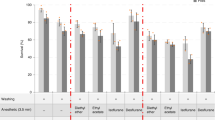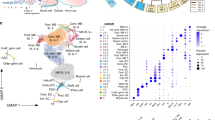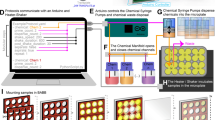Abstract
Live imaging of stem cells and their support cells can be used to visualize cellular dynamics and fluctuations of intracellular signals, proteins, and organelles in order to better understand stem cell behavior in the niche. We describe a simple protocol for imaging stem cells in the Drosophila ovary that improves on alternative protocols in that flies of any age can be used, dissection is simplified because the epithelial sheath that surrounds each ovariole need not be removed, and ovarioles are imaged in a closed chamber with a large volume of medium that buffers oxygen, pH, and temperature. We also describe how to construct the imaging chamber, which can be easily modified and used to image other tissues and non-adherent cells. Imaging is limited by follicle cells moving out of the germarium in culture around the time of egg chamber budding; however, the epithelial sheath delays this abnormal cell migration. This protocol requires an hour to prepare the ovarioles, followed by half an hour on the confocal microscope to locate germaria and set z limits. Successful imaging time depends on germarial morphology at the time of dissection, but we suggest 10–11 h to encompass all specimens.
This is a preview of subscription content, access via your institution
Access options
Access Nature and 54 other Nature Portfolio journals
Get Nature+, our best-value online-access subscription
$29.99 / 30 days
cancel any time
Subscribe to this journal
Receive 12 print issues and online access
$259.00 per year
only $21.58 per issue
Buy this article
- Purchase on Springer Link
- Instant access to full article PDF
Prices may be subject to local taxes which are calculated during checkout




Similar content being viewed by others
Data availability
The data that support the findings of this study are available from the corresponding author upon request.
Change history
15 February 2019
The version of this paper originally published contained an incorrect unit abbreviation in Step 21: “0.20 g/mL” should have been “0.20 mg/mL.” In addition, the first sentence in Step 33 should have read “Use a second pipette with a cut-off pipette tip to add Matrigel to the center well,” instead of “Use a second pipette to cut off the tip of the pipette and add Matrigel to the center well.” These errors have been corrected in the PDF and HTML versions of the protocol.
References
Reilein, A. et al. Alternative direct stem cell derivatives defined by stem cell location and graded Wnt signalling. Nat. Cell Biol. 19, 433–444 (2017).
Prasad, M., Jang, A. C., Starz-Gaiano, M., Melani, M. & Montell, D. J. A protocol for culturing Drosophila melanogaster stage 9 egg chambers for live imaging. Nat. Protoc. 2, 2467–2473 (2007).
Cimetta, E., Figallo, E., Cannizzaro, C., Elvassore, N. & Vunjak-Novakovic, G. Micro-bioreactor arrays for controlling cellular environments: design principles for human embryonic stem cell applications. Methods 47, 81–89 (2009).
Zhang, Q., Shalaby, N. A. & Buszczak, M. Changes in rRNA transcription influence proliferation and cell fate within a stem cell lineage. Science 343, 298–301 (2014).
Fichelson, P. et al. Live-imaging of single stem cells within their niche reveals that a U3snoRNP component segregates asymmetrically and is required for self-renewal in Drosophila. Nat. Cell Biol. 11, 685–693 (2009).
Mathieu, J. & Huynh, J. R. Monitoring complete and incomplete abscission in the germ line stem cell lineage of Drosophila ovaries. Methods Cell Biol. 137, 105–118 (2017).
Banisch, T. U., Maimon, I., Dadosh, T. & Gilboa, L. Escort cells generate a dynamic compartment for germline stem cell differentiation via combined Stat and Erk signalling. Development 144, 1937–1947 (2017).
Morris, L. X. & Spradling, A. C. Long-term live imaging provides new insight into stem cell regulation and germline-soma coordination in the Drosophila ovary. Development 138, 2207–2215 (2011).
Shalaby, N. A. & Buszczak, M. Live-cell imaging of the adult Drosophila ovary using confocal microscopy. Methods Mol. Biol. 1463, 85–91 (2017).
Cetera, M., Lewellyn, L. & Horne-Badovinac, S. Cultivation and live imaging of Drosophila ovaries. Methods Mol. Biol. 1478, 215–226 (2016).
Prasad, M., Wang, X., He, L., Cai, D. & Montell, D. J. Border cell migration: a model system for live imaging and genetic analysis of collective cell movement. Methods Mol. Biol. 1328, 89–97 (2015).
Peters, N. C. & Berg, C. A. In vitro culturing and live imaging of Drosophila egg chambers: a history and adaptable method. Methods Mol. Biol. 1457, 35–68 (2016).
Middleton, C. A. et al. Neuromuscular organization and aminergic modulation of contractions in the Drosophila ovary. BMC Biol. 4, 17 (2006).
Andersen, D. & Horne-Badovinac, S. Influence of ovarian muscle contraction and oocyte growth on egg chamber elongation in Drosophila. Development 143, 1375–1387 (2016).
Lee, T. & Luo, L. Mosaic analysis with a repressible cell marker (MARCM) for Drosophila neural development. Trends Neurosci. 24, 251–254 (2001).
Griffin, R. et al. The twin spot generator for differential Drosophila lineage analysis. Nat. Methods 6, 600–602 (2009).
Wu, J. S. & Luo, L. A protocol for mosaic analysis with a repressible cell marker (MARCM) in Drosophila. Nat. Protoc. 1, 2583–2589 (2006).
Acknowledgements
We thank A. Choi for assistance in performing live-imaging experiments and D. Melamed for capturing the video of the RFP- and GFP-labeled germarium in Fig. 3. We are grateful to R. Lehmann for the Vasa-mCherry flies. This work was supported by National Institutes of Health grants to D.K. (RO1GM079351) and to G.V.-N. (EB002520). E.C. was supported by the New York Stem Cell Foundation (NYSCF-D-FO2O).
Author information
Authors and Affiliations
Contributions
E.C., N.M.T., and G.V.-N. designed the imaging chamber. E.C., N.M.T., and A.R. developed the protocol to embed the ovarioles in Matrigel. A.R. developed the live-imaging protocol. D.K. provided input on live-imaging analysis.
Corresponding authors
Ethics declarations
Competing interests
The authors declare no competing financial interests.
Additional information
Publisher’s note: Springer Nature remains neutral with regard to jurisdictional claims in published maps and institutional affiliations.
Related link
Key references using this protocol
1. Reilein, A. et al. Nat. Cell Biol. 19, 433–444 (2017): https://doi.org/10.1038/ncb3505
Supplementary information
Supplementary Video 1
Construction of the imaging chamber. The video demonstrates Steps 5–17 of the protocol: cutting and trimming the PDMS membrane to size, punching the wells and channels, and bonding the PDMS to the glass coverslip.
Supplementary Video 2
Typical movement of a germarium within the epithelial sheath. The epithelial sheath undergoes irregular contractions that necessitate embedding of ovarioles in Matrigel to reduce the chance of their moving out of the imaging window. In this ovariole a follicle stem cell (FSC) clone that contains two GFP-labeled FSCs (arrow) was labeled by the MARCM technique. Note that rotations of the germarium (most notably at 2:15 and 3:15) give the impression of FSC movement, and thus FSC movements must be quantified relative to one another. Time is in hours:minutes.
Supplementary Video 3
Germline and follicle stem cell (FSC) divisions. Corresponding to Fig. 3. Middle z-sections of a germarium with GFP+ RFP+, GFP+, or RFP+ stem cell lineages show an FSC division (from 1:29 to 1:53), a germline cyst division (from 1:41 to 2:11) and a germline stem cell (GSC) division (from 3:58 to 4:22). Time is in hours:minutes. Scale bar, 20 µm.
Supplementary Video 4
Budding of a germarium against an egg chamber. An ovariole expressing Vasa-mCherry to label germline cells shows rotation, growth, and elongation of egg chambers and a germarium budding along the length of the egg chamber above it.
Supplementary Video 5
Follicle cells exiting the germarium at the time of budding. Two z-planes of a germarium without the muscle sheath show budding (z5) and follicle cells moving out of region 3 at the time of budding (z10; circle). Note how the germarium twists as it buds off.
Supplementary Video 6
Follicle cells exiting the germarium are viable. 10XSTAT-GFP-expressing flies were dissected in imaging medium containing 5 µM propidium iodide (PI) to label dead cells. A germarium with a few dead cells in the first egg chamber was chosen to demonstrate cells that have taken up PI. The germarium elongated and cysts matured until the region 3 follicle was ready to bud. At 3 h 24 min follicle cells began to emerge from the presumptive region 3 (arrows) but did not take up PI even 3.5 h after the cells started to emerge.
Supplementary Video 7
Dissection of ovaries for live imaging. This video demonstrates Steps 27–29 of the protocol in which ovaries are separated into individual ovarioles, egg chambers after stage 7/8 are severed off with forceps, and stage 13/14 egg chambers are removed from the dissection well.
Supplementary Video 8
Twisting of the germarium as it buds. A germarium with a muscle sheath undergoes a 90º twist as it buds an egg chamber. The twinspot MARCM technique was used to generate GFP+ or RFP+ clones.
Supplementary Video 9
Rotation of region 3 follicle cells. Follicle cells labeled with GFP by the MARCM technique are seen to be rotating with the budding follicle.
Supplementary Video 10
FSC movement in a germarium. Corresponding to Fig. 4. Each time point in this video is a maximum projection of z-stacks to show four GFP-labeled FSCs (indicated with colored arrows). FSCs move radially and frequently change direction. This video also shows how the germarium can become bunched up with other egg chambers inside the muscle sheath. Time is in hours:minutes.
Rights and permissions
About this article
Cite this article
Reilein, A., Cimetta, E., Tandon, N.M. et al. Live imaging of stem cells in the germarium of the Drosophila ovary using a reusable gas-permeable imaging chamber. Nat Protoc 13, 2601–2614 (2018). https://doi.org/10.1038/s41596-018-0054-1
Published:
Issue Date:
DOI: https://doi.org/10.1038/s41596-018-0054-1
Comments
By submitting a comment you agree to abide by our Terms and Community Guidelines. If you find something abusive or that does not comply with our terms or guidelines please flag it as inappropriate.



